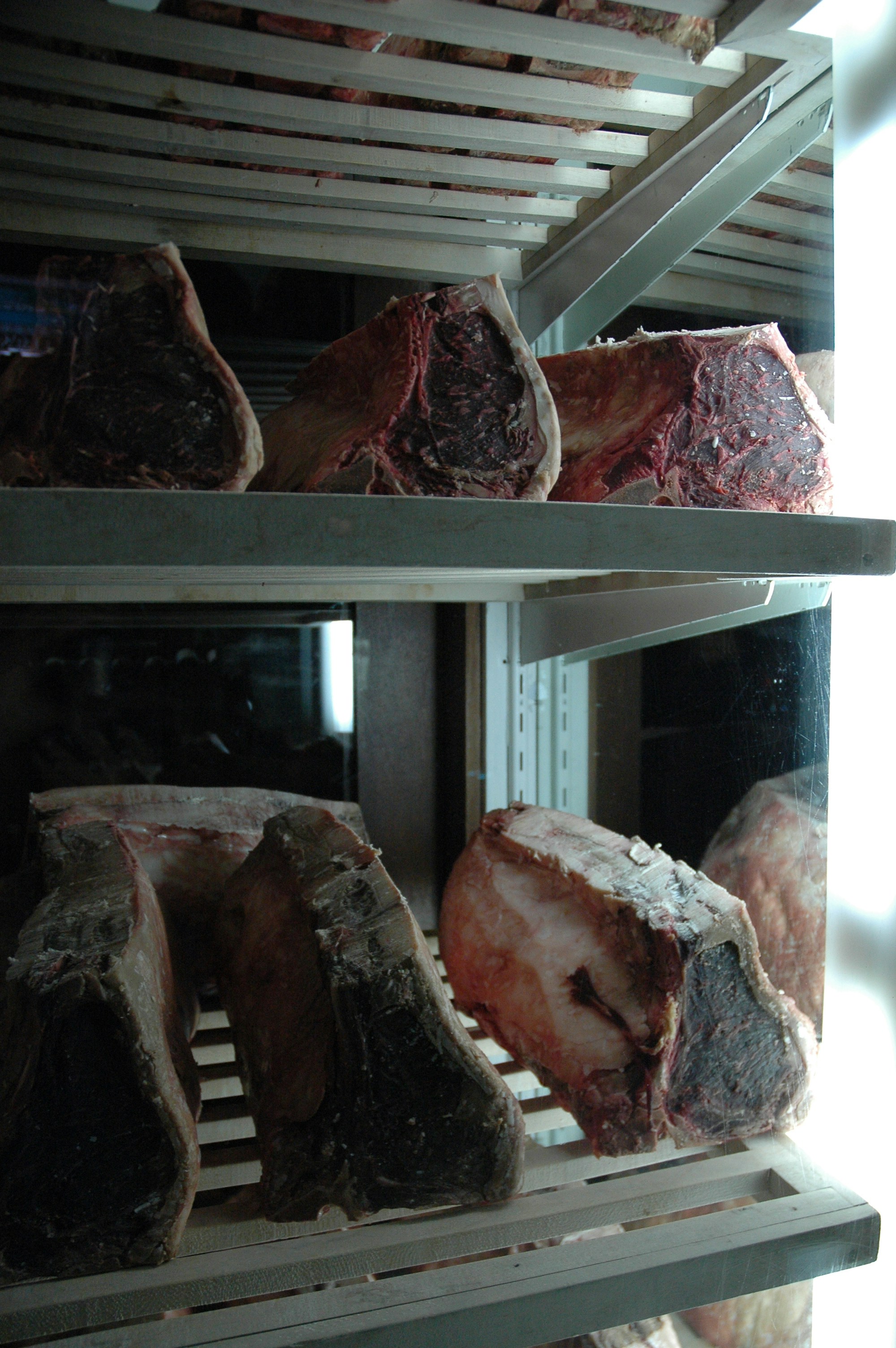
Introduction to Beef Cuts
Beef cuts refer to the specific portions of meat that are derived from various parts of a cow. Understanding these cuts is essential for both culinary professionals and home cooks, as each cut offers unique textures, flavors, and cooking methods. The significance of beef cuts in culinary practices extends beyond mere taste; they also influence the cost, preparation time, and nutritional value of meals.
To gain a comprehensive understanding of beef cuts, it is imperative to familiarize oneself with the basic anatomy of a cow. The animal can be divided into several sections, each yielding different cuts of meat. These sections are typically categorized into primal cuts, which are further broken down into sub-primal cuts and individual steaks or roasts. The major primal cuts include the chuck, rib, loin, round, flank, plate, and brisket. Each of these areas has specific characteristics that affect the tenderness and flavor profile of the beef.
<pfor and="" appropriate="" are="" as="" chuck,="" conversely,="" cooking="" cuts="" different="" each="" enhance="" example,="" findings="" flavor,="" for="" from="" grilling="" highlight="" importance="" knowing="" known="" like="" loin,="" method="" methods="" most="" of="" often="" or="" p="" pan-searing.="" preparation="" prepared="" prized="" quick="" region,="" require="" rich="" select="" shoulder="" sirloin,="" slow="" such="" techniques="" tenderloin="" tenderness="" tenderness.="" the="" their="" they="" to="" tougher="" using="" usually="" variety.<pas a="" aim="" and="" as="" available="" beef="" cooking.="" culinary="" cuts="" cuts.The Primal Cuts of Beef
The beef carcass is divided into eight primal cuts, each with specific characteristics that significantly impact the flavor and tenderness of the meat. These primal cuts serve as the foundation for many sub-cuts known in culinary practices. Understanding them is essential for anyone interested in beef preparation or consumption.
The first primal cut is the chuck, located in the shoulder area. This cut is generally larger and is known for its rich flavor due to the ample marbling present. Chuck cuts, such as the chuck roast or shoulder steak, are particularly favored for braising and slow cooking, fostering tenderness.
The rib primal cut follows, situated between the chuck and the loin. As one of the premium cuts, it offers well-marbled, tender options such as ribeye steaks and prime rib. The rib section is characterized by its buttery texture and robust taste, making it a popular choice in high-end dining.
Next is the loin, which is divided into the short loin and the sirloin. The loin provides some of the most prized cuts, such as T-bone and porterhouse steaks, known for their tenderness and flavor. Positioned along the back, this cut is less exercised, which contributes to its softness.
The round primal cut comes from the rear leg of the cow. This area typically yields leaner, less fatty cuts, such as top round and eye round. While they are less tender compared to other cuts, they can be quite flavorful when properly prepared, often suited for roasts or slow-cooked dishes.
The flank primal cut is positioned below the loin and yields meat that is flavorful but can be tough if not cooked correctly. Flank steak is often marinated and grilled or used in stir-fries to enhance its tenderness.
Moving along, the plate primal cut is found on the underside of the cow, comprising cuts like skirt steak. This area tends to have more fat and connective tissue, contributing to a rich flavor, making it ideal for cooking methods that involve high heat, like grilling or searing.
The brisket cut, located at the front of the cow, comes from the breast section. It is known for its thickness and substantial connective tissue. The brisket is ideal for smoking or braising, resulting in tender, flavorful meat when cooked properly.
Lastly, the shank primal cut, which comes from the legs of the cow, consists of a lean muscle surrounded by connective tissue. Due to its rigorous use, this cut tends to be tough, but it’s exceptionally flavorful and works best for slow cooking, resulting in rich, hearty dishes.
In conclusion, understanding these primal cuts of beef is vital, as they form the basis from which various sub-cuts can be derived, offering a range of flavors and textures for diverse culinary contexts.
Detailed Cuts from the Chuck Section
The chuck primal is a substantial section of the cow, known for its richness in flavor and relatively economical pricing compared to other cuts. This area is located near the shoulder, which is used extensively by the animal, resulting in cuts that can offer both taste and texture. Among the most popular cuts derived from the chuck are the chuck eye, shoulder steak, and brisket. Understanding these cuts can help home cooks and professional chefs alike make informed decisions for various cooking methods.
The chuck eye is often referred to as the “poor man’s ribeye” due to its marbling and flavor profile. This cut can be grilled, pan-seared, or roasted, with its best uses being in recipes where tenderness is key. Cooking the chuck eye to medium-rare creates a delicious, juicy steak that is perfect for a sumptuous dinner or barbecue.
Shoulder steak, another excellent cut from the chuck, is particularly versatile. It is typically less tender but compensates with bold flavors. The shoulder steak is best cooked using methods that allow for longer cooking times, such as braising or slow cooking. This method helps to break down its connective tissues, resulting in a tender and flavorful dish, ideal for stews or hearty sandwiches.
Brisket, while technically a cut from the breast section of the cow, shares many cooking similarities with chuck cuts. Known for its robust flavor and tenderness when cooked properly, brisket is frequently utilized in barbecue dishes and slow-smoked for extended periods. The key to a successful brisket lies in maintaining moisture, allowing the fat to render and contribute to the richness of the final dish.
In summary, the chuck primal offers distinctive cuts that can enhance any meal. Understanding their characteristics and best cooking practices will help maximize flavor while ensuring a delicious dining experience.
Exploring the Rib Section
The rib section of a cow is renowned for its tender cuts that are celebrated for their rich flavor and marbling. This primal cut includes several popular sub-cuts, such as the ribeye steak, prime rib, and short ribs, each offering a unique culinary experience. The marbling—the intramuscular fat found within the meat—is particularly significant in this section, as it contributes to the juiciness and taste, making these cuts favorites among beef enthusiasts.
Ribeye steak, often regarded as one of the most flavorful cuts, features a generous distribution of fat, which melts during cooking, enriching the beef with a buttery texture. The ideal cooking methods for ribeye include grilling or pan-searing, which allow the exterior to develop a desirable crust while maintaining a tender inside. It is often recommended to cook ribeye steaks to medium-rare to enjoy the optimal balance of flavor and tenderness, allowing the fat to enhance the cut’s natural beefiness.
Another notable cut from the rib section is prime rib, which is typically served whole and is often the centerpiece of festive gatherings. This cut boasts a substantial layer of fat that bastes the meat as it roasts, creating an incredibly succulent profile. Slow-roasting prime rib at a low temperature will yield a tender and juicy result, with the recipe commonly enhanced by seasonings such as garlic and rosemary to complement its rich flavor.
Lastly, short ribs are characterized by their meaty texture and robust flavor. These cuts benefit from longer cooking methods, such as braising, which allows the connective tissue to break down, resulting in a melt-in-your-mouth experience. The combination of the short ribs’ fat content and slow cooking creates a savory depth of flavor, making them highly sought after in various culinary applications.
Loin Cuts: Tender and Flavorful
The loin cuts of beef are highly regarded for their exceptional tenderness and rich flavor. These premium cuts are located along the back of the cow and are renowned for their quality, making them a favored choice among beef enthusiasts. Key cuts from the loin include the T-bone, Porterhouse, and filet mignon, each offering unique characteristics and cooking possibilities.
The T-bone steak is famous for its dual nature, combining both the strip and tenderloin sections. This cut features a distinctive bone shaped like a “T” that separates the two types of meat. Cooking techniques for T-bone steaks typically involve grilling or pan-searing, which allow the rich marbling and natural juices to enhance the flavor. Serving T-bone steaks during special occasions, such as barbecues or family gatherings, can elevate the dining experience significantly.
Similarly, the Porterhouse steak is often hailed as one of the meatiest cuts due to its substantial size and the presence of both the strip and tenderloin. Denser than the T-bone, Porterhouse steaks are best suited for grilling or broiling at high temperatures to retain moisture and flavor. This cut is ideal for celebrations, where guests can indulge in a true beef experience.
Filet mignon, known for being the most tender steak, is derived from the tenderloin section of the cow. Its buttery texture allows for various cooking methods, including roasting, grilling, or pan-searing. Often reserved for fancy dinners or romantic occasions, filet mignon pairs well with rich sauces or sides, enhancing the overall culinary experience.
In essence, loin cuts exemplify the pinnacle of beef quality. Their combination of tenderness and rich flavor makes them a preferred choice for both casual dining and special celebrations. Understanding these cuts not only enriches one’s culinary repertoire but also leads to more enjoyable meals with the versatility these premium choices provide.
Understanding Cuts from the Round Section
The round primal is located in the rear section of the cow and consists of several cuts known for their robust flavor and lean characteristics. The major cuts from the round include top round, bottom round, and eye of round, each presenting unique textures and culinary possibilities. Understanding these differences is essential for selecting the appropriate cut for your cooking needs.
Top round, often referred to as the ‘inside round’, is a large cut that is relatively lean and versatile. It is well-suited for roasting, grilling, or marinating, allowing the flavorful profile to shine through. When cooked correctly, top round can be exceptionally tender and juicy, making it an excellent choice for dishes such as London broil or thinly sliced for sandwiches. Utilizing techniques such as marinating or slow cooking can help enhance its tenderness and flavor.
Bottom round, on the other hand, is subdivided into two primary cuts: bottom round roast and bottom round steak. This cut is slightly tougher than the top round and carries a strong beef flavor. It is ideal for slow cooking methods such as braising or roasting, which allow the connective tissues to break down and ensure a tender result. This cut is commonly used in pot roasts or for making jerky, as its low-fat content allows it to dry well without becoming overly greasy.
Lastly, the eye of round, a cylindrical muscle, is known for its fine grain and lean nature. While it is less tender than the top and bottom rounds, eye of round can be efficiently used in dishes requiring long cooking times, such as stews or barbecues. When cooked to medium-rare and sliced thinly against the grain, it can be surprisingly tender and flavorful. Understanding the nuances between these round cuts allows for better preparation methods that highlight their unique qualities in various culinary applications.
Exploring the Flank and Plate Cuts of Beef
The flank and plate sections of a cow are often underappreciated, yet they offer a variety of flavorful cuts that can elevate your culinary creations. Understanding these cuts, such as flank steak, skirt steak, and short ribs, can enhance your dining experience while enabling you to explore new cooking methods and cuisines.
Flank steak, a long and flat cut, is derived from the abdominal muscles of the cow. Known for its robust flavor and relatively low fat content, this cut is best when marinated and grilled or seared quickly over high heat. It is important to cut flank steak against the grain to ensure tenderness. The meat’s intense flavor profiles make it an ideal choice for fajitas, stir-fries, or even served on its own with a chimichurri sauce.
Another noteworthy cut from this region is the skirt steak, located near the plate section of the cow. Skirt steak features a loose grain, which allows it to absorb marinades well, making it particularly flavorful. Perfect for grilling or pan-searing, this cut can be showcased in dishes like tacos or served atop salads. Its hearty texture pairs beautifully with robust seasonings and vibrant salsas, enriching the overall taste experience.
Short ribs, a cut from the lower part of the ribcage, offer a different style of preparation. The meat is marbled with fat, providing a rich and tender bite when braised or slow-cooked. This cut shines in various cuisines, from Korean BBQ (Galbitang) to classic American barbecue styles. The deep flavor and succulent texture inherent in short ribs make them a favorite for comfort food enthusiasts.
Incorporating flank, skirt, and short ribs into your meals can provide an opportunity to explore diverse cooking techniques while enjoying the unique characteristics each cut offers. These less commonly utilized cuts deserve attention in the culinary world, promising both flavor and satisfaction in every bite.
Brisket: A BBQ Favorite
Brisket, derived from the lower chest of the cow, stands out as one of the most respected and sought-after cuts in barbecue cuisine. This particular cut contains a significant amount of connective tissue and fat, which contribute to its rich flavor and tenderness when cooked properly. Due to its composition, brisket requires specialized cooking techniques to maximize its potential, making it a favorite choice among barbecue enthusiasts.
The two primary methods for cooking brisket are smoking and braising. Smoking typically involves a low and slow cooking process, which allows the meat’s connective tissues to break down over time, resulting in an incredibly tender and flavorful product. For optimal results, the meat is often seasoned with a dry rub and smoked at temperatures ranging between 225°F and 250°F for several hours. The key elements in this approach are patience and careful monitoring of the internal temperature, aiming for around 195°F to 205°F, which aids in achieving the desired tenderness.
Braising, on the other hand, is a moist heat cooking technique that can also produce delectable outcomes. This method generally involves searing the brisket on high heat before slow-cooking it in liquid, allowing it to absorb rich flavors while ensuring it remains juicy throughout the process. Cooking brisket this way also allows for greater versatility in terms of seasonings and braising liquids, ranging from beef stock to various wines and spices.
Regardless of the method employed, several tips can help achieve that perfect brisket. Letting the meat rest after cooking is crucial as it allows juices to redistribute, enhancing flavor and moisture. Additionally, slicing against the grain will ensure a more tender bite. In conclusion, whether smoking or braising, mastering the art of brisket cooking can lead to a phenomenal barbecue experience that tantalizes the palate.
Common Cooking Techniques for Different Cuts
When it comes to preparing beef, understanding the distinct characteristics of various cuts is crucial in selecting an appropriate cooking technique. Each cut boasts unique textures and flavors, requiring tailored methods to enhance the overall dining experience. Here, we will explore several common cooking techniques, including grilling, roasting, braising, and sous vide, elucidating their suitability for differing beef cuts.
Grilling is a popular technique often employed for more tender cuts such as ribeye, sirloin, and tenderloin. The high heat associated with grilling creates a sear on the meat, locking in juices and infusing it with a charred flavor. For best results, cuts should be marinated or seasoned before cooking to enhance their natural taste. The quick cooking time is ideal for achieving that perfect medium-rare finish.
Roasting, on the other hand, is well-suited for larger cuts like prime rib or beef tenderloin. This method involves cooking the beef in an oven, which allows for even heat distribution. The result is a tender and flavorful roast, often paired with vegetables. It is essential to monitor internal temperatures to ensure optimal doneness, preferably using a meat thermometer, to avoid overcooking.
Braising is especially effective for tougher cuts such as chuck roast or brisket. This technique involves slow-cooking the meat in a liquid, allowing it to become tender while absorbing rich flavors. The combination of heat and moisture breaks down the connective tissues, making the beef melt-in-your-mouth tender. It is often accompanied by aromatic vegetables and herbs to enhance the dish further.
Finally, sous vide is a technique gaining popularity for precision cooking. In this method, beef cuts, such as flank or short ribs, are vacuum-sealed and immersed in a water bath at controlled temperatures. This allows for even cooking throughout the cut, resulting in consistent texture and flavor. Sous vide cooking is ideal for those seeking to achieve gourmet results without the guesswork.









